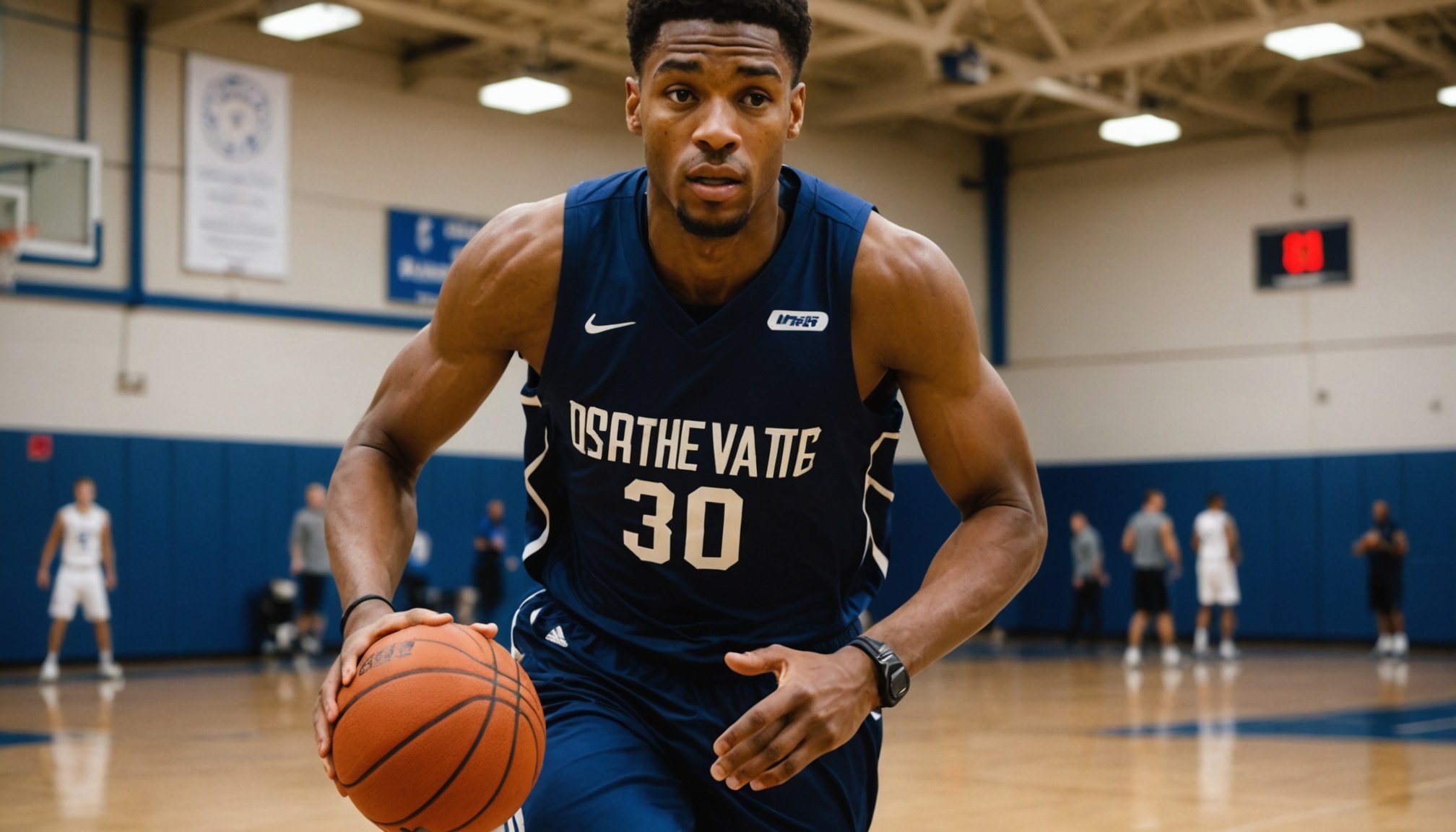Overview of Heart Rate Monitors
Heart rate monitors are essential devices for athletes focusing on training efficiency. They provide real-time data on heart rate, allowing individuals to adjust their intensity to meet training goals. Heart rate monitors are particularly important in sports such as basketball, where performance is closely tied to cardiovascular conditioning.
Monitoring heart rate during basketball training allows players to optimize their workouts by ensuring they’re training at the right intensity. This can help improve endurance, speed, and overall game performance by keeping the heart rate within the target zone. For basketball players, maintaining the correct heart rate can significantly enhance their efficiency on the court.
Also to discover : Speed secrets: proven techniques for uk basketball athletes to boost defensive reaction times
There are several types of heart rate monitors available, each suited to different needs. Chest strap monitors are known for their accuracy and are often preferred by professional athletes. Alternatively, wrist-based monitors offer more convenience and ease of use, making them suitable for general fitness enthusiasts. Other options include earbud monitors, which combine heart rate tracking with audio feedback, adding another layer of support during training. Understanding these options can help athletes choose the heart rate monitor that best supports their training efficiency and basketball performance.
Benefits of Using Heart Rate Monitors in Basketball Training
Heart rate monitors offer substantial training benefits in basketball by enhancing performance and providing valuable player insights. They are particularly effective in improving cardiovascular fitness, as athletes can engage in targeted training regimes. By continuously tracking an athlete’s heart rate, coaches can ensure exercises remain within optimal heart rate zones, pushing athletes to achieve their maximum potential without unnecessary exertion.
In parallel : Maximizing performance potential: the essential role of strength and conditioning in training uk basketball athletes
Monitoring exertion levels is crucial in preventing overtraining. Players are often susceptible to fatigue, which can undermine performance. Heart rate monitors allow for real-time tracking, enabling players and coaches to adjust the intensity of workouts before reaching exhaustion. This approach not only safeguards the player’s health but also sustains performance enhancement over long periods.
Besides, understanding recovery times is essential for optimal athletic performance. By accurately capturing heart rate variations during rest, players gain insights into their recovery processes. This data informs adjustments to training schedules, ensuring each player receives the appropriate time for recovery based on their heart rate patterns. This personalized approach contributes to more efficient training sessions and improved overall performance.
Selecting the Right Heart Rate Monitor for Basketball Players
When it comes to product selection for basketball players, finding a heart rate monitor that suits your needs can be quite the game-changer. Features to consider include accuracy, comfort, connectivity, and battery life. Since basketball is a high-intensity sport, accuracy is crucial in tracking real-time heart rates efficiently. Monitors that offer seamless connectivity to smartphones via Bluetooth can provide more in-depth data analysis, which is vital for performance improvement.
The UK market offers numerous options, making it essential to compare popular brands and models. For example, the Polar H10 and Garmin HRM-Pro are renowned for their precision and comfort. The Polar H10 is appreciated for its compatibility with multiple devices, while the Garmin HRM-Pro stands out due to its impressive data storage capabilities.
Price ranges vary significantly from budget-friendly options to high-end models. However, it’s important for budget-conscious players to focus on value. It might be worthwhile to invest a bit more for a monitor with solid durability and advanced features, which could provide greater benefits long-term. Keep an eye out for models that offer a balanced blend of functionality and cost to ensure you make an informed decision.
Best Practices for Using Heart Rate Monitors During Training
Understanding the proper setup of heart rate monitors before commencing training is crucial. Prior to workouts, ensure the device is snugly fitted, positioned correctly, and fully charged for optimal performance. Wet the sensors slightly if advised by the manufacturer to improve connectivity.
Once properly set up, it is key to use the heart rate data effectively during workouts. Start by determining your target heart rate zone, which can usually be derived as a percentage of your maximum heart rate. Tailor your training practices to keep your heart rate within this zone, ensuring optimal cardiovascular benefits while preventing overexertion.
Incorporating heart rate monitoring into team training sessions can greatly enhance performance. Facilitate team discussions around individual device usage and share strategies for using the data to refine techniques. Coaches can monitor athletes’ exertion levels, adjusting training practices to maximise results and minimise injury risk.
By blending effective device usage with insightful training practices, athletes can extract the full potential from their heart rate monitors, paving the way for performance improvements and healthier training routines.
Analyzing Heart Rate Data for Performance Improvement
Understanding heart rate zones is crucial for enhancing physical performance. These zones, typically ranging from low-intensity recovery to high-intensity maximum effort, help athletes tailor their workouts for specific goals, such as building endurance or burning fat. Knowing the physiological significance of each zone enables athletes to structure their sessions efficiently.
The advent of modern technology provides multiple tools and apps capable of analyzing heart rate data comprehensively. Applications such as Garmin Connect and Polar Flow offer user-friendly interfaces that track and interpret heart rate metrics, facilitating better insight into personal health. These tools present data visually, thus making it simpler for users to perceive patterns and assess performance.
Data-driven decision-making is key to effective training adjustments. By closely monitoring heart rate data, athletes can determine whether their current training regimen is meeting their goals. For example, consistently high heart rates during routine exercises might indicate overtraining, necessitating a reduction in intensity. Conversely, substantially low heart rates might signal insufficient exertion, prompting an increase in workout effort. This nuanced approach ensures that training remains optimally aligned with personal fitness objectives.
Integrating Heart Rate Monitors into Training Routines
Incorporating heart rate monitors into sports can greatly enhance training integration and routine optimisation. Understanding how to effectively use this technology in sports allows athletes, coaches, and trainers to create personalised training schedules. By analysing heart rate feedback, training routines can be adjusted in real-time, helping optimise performance and prevent overtraining.
Education plays a vital role in the routine optimisation process. Coaches and athletes must understand how to interpret heart rate data to make informed decisions. Regular workshops or seminars can aid in educating them on the nuances of incorporating such technology effectively.
Establishing routine assessments is crucial for tracking progress over time. Heart rate monitors provide consistent data, allowing for a detailed analysis of athletic improvements or potential setbacks. By comparing data from different training periods, one can evaluate how well different routines are working, ensuring that training remains goal-oriented and efficient.
Integrating heart rate monitors into training not only fosters better outcomes but also promotes an understanding of physiological responses. With the right knowledge and resources, athletes and coaches can maximise their potential, leveraging technology as a tool for success.











